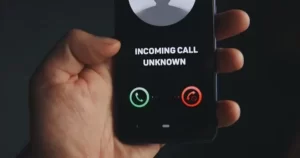In today’s digital age, scams have taken on many forms, with scammers constantly finding new ways to exploit unsuspecting individuals. One such scam that has gained notoriety in recent times is the US9514961195221 scam, which involves fake text messages. In this article, we will delve into the details of this scam, how it operates, and what you can do to protect yourself. We will also provide answers to some frequently asked questions (FAQs) to help you stay informed and vigilant.
What is the US9514961195221 Scam?
The US9514961195221 scam revolves around deceptive text messages sent to individuals, attempting to trick them into revealing personal information or parting with their hard-earned money. The scam typically involves a message that appears to be from a legitimate source, such as a bank, government agency, or a well-known company. The message often contains urgent or alarming content, aiming to create a sense of urgency and panic.
How Does the Scam Work?
- Fake Alerts: Scammers send out text messages that mimic official alerts or notifications. These messages often claim that there is a problem with your account, a suspicious transaction, or an urgent update required.
- Phishing Links: The text message usually includes a link that directs you to a fraudulent website designed to resemble a legitimate one. Once you click on the link, you may be asked to enter sensitive information, such as your login credentials, credit card details, or social security number.
- Malware Distribution: In some cases, clicking on the link may lead to the installation of malicious software (malware) on your device, allowing scammers to gain unauthorized access to your personal information.
- Financial Scams: Scammers may also use these fake messages to lure victims into money-related scams, such as promising prizes, winnings, or investment opportunities that don’t exist.
Protecting Yourself from the US9514961195221 Scam
- Verify the Source: Always verify the sender’s identity and the legitimacy of the message. Contact the organization directly through official channels if you have doubts.
- Don’t Click Suspicious Links: Refrain from clicking on links in unsolicited text messages, especially if they ask for personal information or financial details.
- Use Strong Passwords: Ensure your online accounts have strong, unique passwords to minimize the risk of unauthorized access.
- Enable Two-Factor Authentication (2FA): Activate 2FA wherever possible to add an extra layer of security to your accounts.
- Install Antivirus Software: Keep your devices protected with reputable antivirus and anti-malware software.
- Report Suspicious Messages: If you receive a suspicious text message, report it to your mobile carrier and the Federal Trade Commission (FTC).
FAQs:
1. How can I tell if a text message is a scam?
- Look for spelling and grammatical errors.
- Check the sender’s phone number or email address.
- Avoid clicking on links in unsolicited messages.
- Verify the message’s authenticity with the organization it claims to be from.
2. What should I do if I’ve fallen victim to the US9514961195221 scam?
- Contact your bank or relevant institution immediately.
- Change your passwords.
- Report the scam to the FTC and local law enforcement.
3. Can scammers gain access to my bank account through these scams?
It is possible if you provide them with sensitive information. Always verify the legitimacy of messages and never share personal or financial details through unsolicited messages.
4. Are there any government agencies that send important text messages?
Yes, some government agencies may send important alerts via text messages. However, you should independently verify the authenticity of such messages before taking any action.
Conclusion
The US9514961195221 scam is a troubling example of how scammers are adapting to new technologies to exploit unsuspecting individuals. By staying informed and following the precautions mentioned in this article, you can protect yourself from falling victim to these deceptive text messages. Remember, it’s essential to be vigilant and cautious when receiving unsolicited messages and to report any suspicious activity promptly. Your online safety is in your hands.


















Be First to Comment